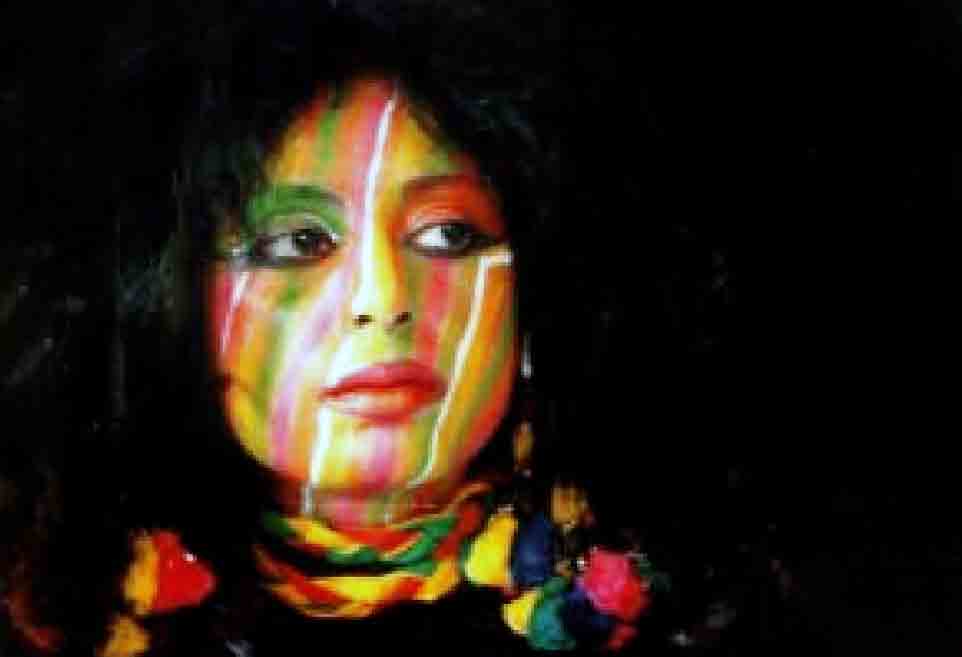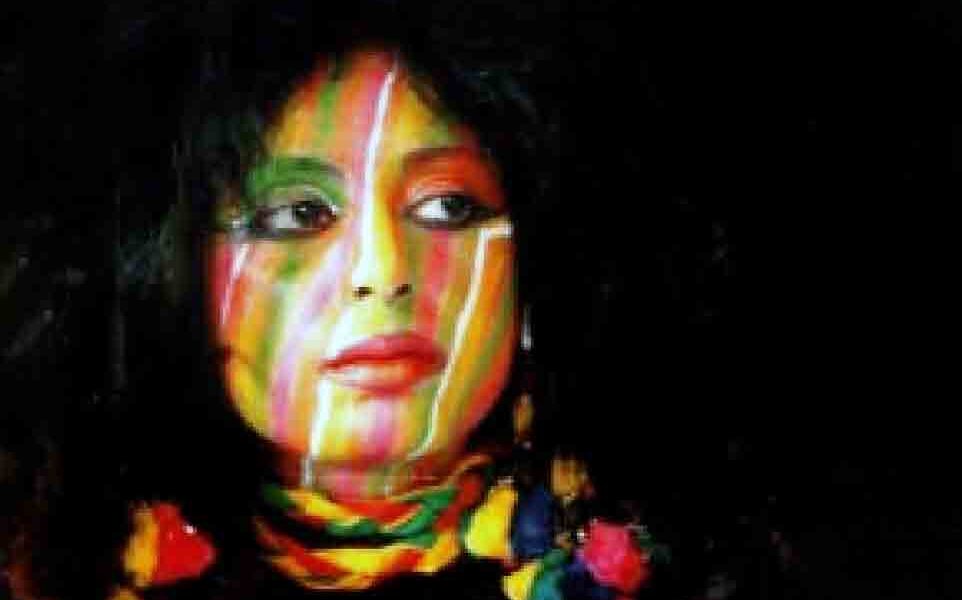The days of my stay in my dreamland Greece (1983–1986)
After completing my MFA degree course at MS University in Baroda, I had another five months due from the total period of my National Cultural Scholarship. In this regard, Prof. Mahendra Pandya told me, ‘Why would you stay in Baroda with hostel expenses and other expenses, it would be better for you to go to Calcutta and learn some work from Meera Mukherjee there’. While I was in Baroda, in 1978 Meera di had come there as a visiting artist in our faculty, so my acquaintance with Meera di was since then.
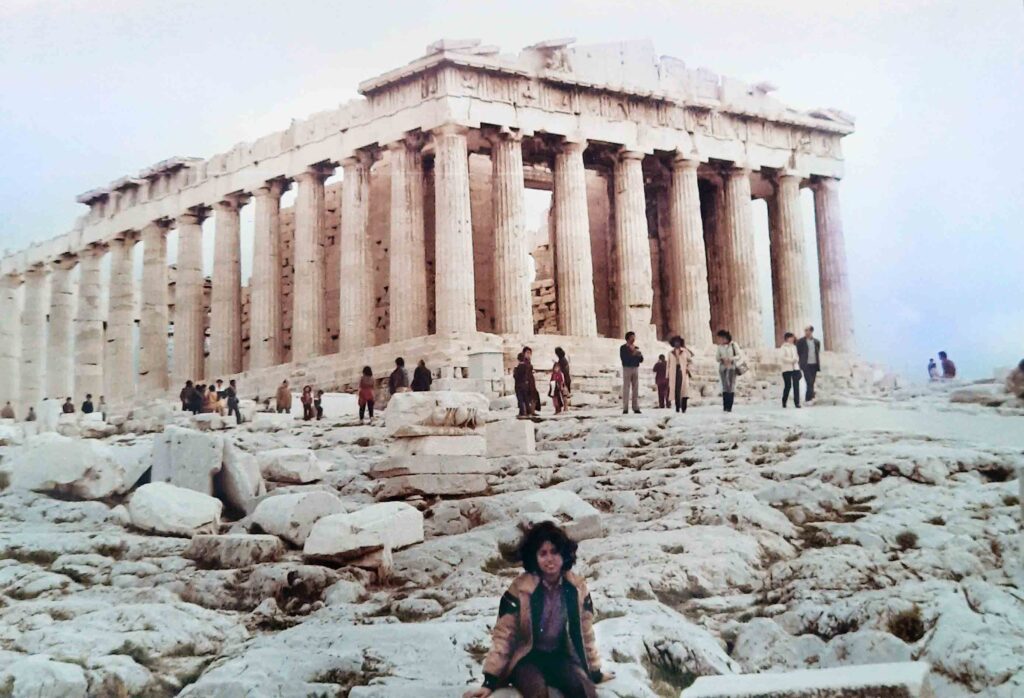
I returned to Calcutta after the M.F.A. examination as suggested by Pandya Sir, and two or three days later, I went to the studio cum home of the sculptor Meera Mukherjee at Padma Pukur. At first, Meera di was a little hesitant to open the door, but then she called me in and asked me to sit. Within five minutes all her hesitations vanished and she started talking to me like a friend. She also brought tea and delicious mosla-muri (spicy puffed rice) for both of us from her studio- kitchen.
I told her what Prof. Mahendra Pandya had suggested to me about the guide of National scholarship and everything, in one breath. Meera di listened to me with curiosity and said, ‘You must come to me from time to time, we will talk, sing, dance, I’ll do my own thing and you’ll observe. In this process, we can exchange our thought-process’. So I used to go to her often and used to attend the bronze casting session at Narendrapur, the sculpture at her studio-home display on the second Saturday. In this way, five months passed and the period of my National Scholarship came to an end. Thereafter, I started applying for foreign scholarships.
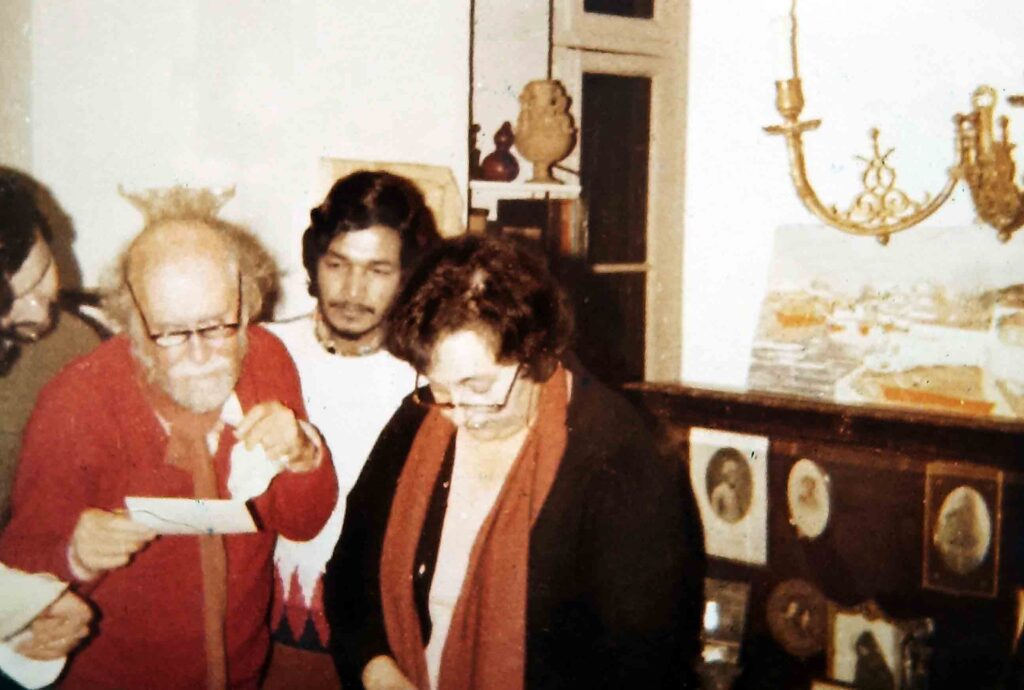
In the meantime one day Mrs. Madhuri Chawdhury, the then principal of Gokhale Memorial Girls’ School, Kolkata, suddenly called me and said, ‘Our art teacher died all of a sudden, could you please come and help us a little’ and handed me an appointment letter. Since then I had been busy between school and home.
During those days I had been to Delhi twice and had faced two interviews for Foreign Scholarships.
The first interview call came for a Japanese scholarship. I saw my two batch-mates— Rajeev Lochan and Biplabi Samaddar were also waiting for the interview with four other candidates while I was entering the Shastri Bhavan in Delhi. The three of us laughed and joked for a while. Rajiv said ‘I look Japanese; surely the experts will send me to Japan’. Biplabi said, ‘Have you seen who the jury expert is? Biswanath Mukerji. I’ll get this scholarship’. I realized it was perhaps not in my destiny.
However, after the interview, I went to Delhi College of Arts, where I met the sculptor S S Vohra, whom I knew; he had come to Baroda as my examiner in 1979. I told him that I wanted to talk to Biswanath Mukerji.
He took me to the principal’s office. Biswanath da looked at me and recognized me, ‘we were quite impressed with your interview’ he said. Again he said that, but ultimately the girls have to enter the kitchen only, so, why should we waste a seat unnecessarily? I said, ‘Why do you think that sculpture and cooking can’t be done together? I have seen Meera Mukherjee in Calcutta; she used to cook on the same stove where she used to work with wax for her sculptures’. Biswanath da then put his hand on my head and said, “Tomari houk jay” (‘May you win.’). I felt happy when he had blessed me from his heart, that victory would surely be mine.
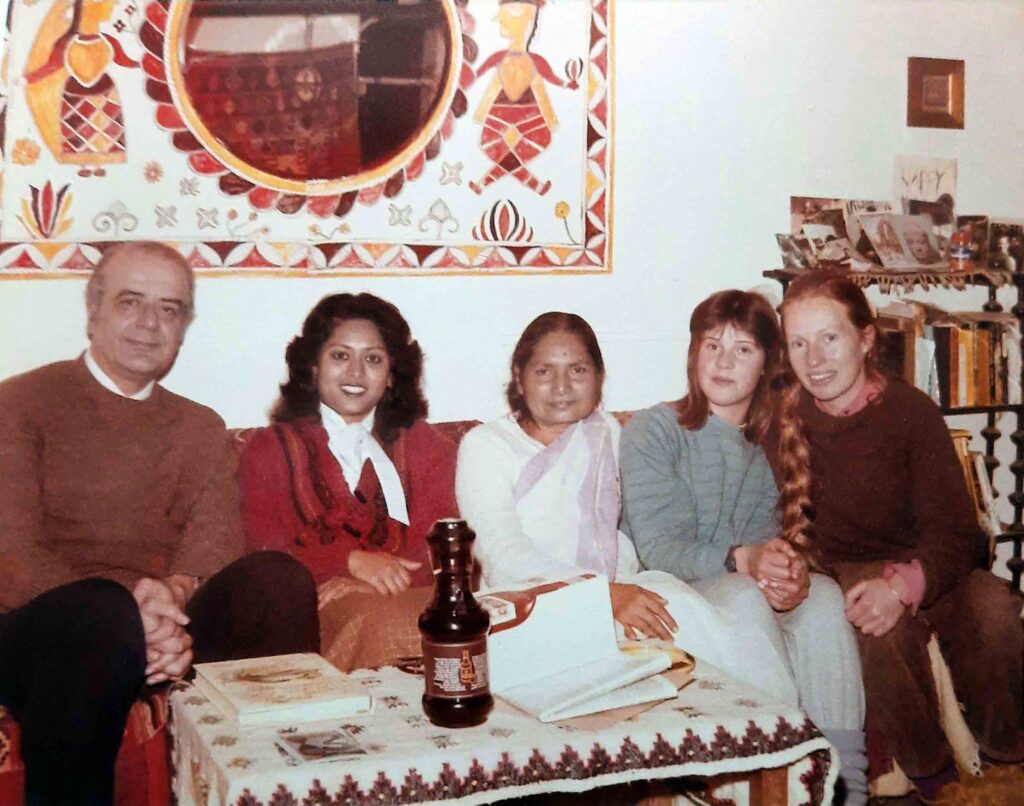
Further, I got an interview call for the French scholarship for which again I attended another interview at Shastri Bhavan. As soon as I entered the interview hall, I saw Prof. K G Subramanyan sitting there with experts from the French Embassy. I showed my work to the experts present there. A few questions were answered by me but Mani Sir was sitting with his head down and did not ask me any questions at all.
After the interview, I went to the office of sculptor S S Vohra again; he said to me, ‘Why did you come? This time my student Subika Lal will be getting the French scholarship’. So, I went back to Calcutta.
At that time Awani Kant, my batch mate friend was in Greece on a Greek scholarship. He had already spent three years there. He suggested that there were no special benefits to having the exchange scholarship from the Government of India because it was for nine months only. In this short period, learning a particular technique or style one could produce something, but that would not fulfil their desire for learning. You rather apply directly for the Greek government doctoral research scholarship from India, which is for four years. I think you could learn more if you stay for a longer period in a country.
According to the advice of Awani, I applied for the IKY Greek Government Scholarship for doctoral research, which I got for a duration of four years, from 1983 to 1987.
Finally, I went to Greece at the end of 1982 after handing over my job of art teachership at Gokhale Memorial Girls School to Rati Narula and Jayashree Chakravarty.
At my request, Prof. Somnath Hore sent a Confidential Recommendation Letter directly to the IKY Greek scholarship department as a referee, that’s why as soon as I entered the department, the director and other staff treated me as if they already knew me. Mrs. Sophia Pitichouti the Director of the State Scholarship Foundation often told me ‘Your referee had given an excellent confidential letter. Your teacher has confidence in you, he believes that whatever you will do, you will do very well.’
A few days later, I went to Athens University to meet Prof. Lambrinoudakis Vasilis with a synopsis of my research with a request to become my guide. He said that he was a specialist in Classical Archaeology, thus since I wanted to write a thesis on aesthetics, I’d better do it under Anglos Papaioannou as he could guide me well. Saying this he wrote a letter to him and also gave me his contact number.
The next day I went to Dr. Papaioannou’s office with the letter and synopsis, my topic was ‘Dynamic Elements in Ancient Greek Sculpture’. Seeing this, he said you may not get enough written material on this subject, that’s why you have to work very hard. Saying this, he wrote a few points for me and told me to start working on those points.
With this, he also wrote a letter to the IKY Scholarship Department as per the requirements.
Awani had been in Greece for three years till then and had made good acquaintances with many celebrated artists and renowned personalities in the cultural field, so it was much easier for me to do many things that I wanted to do.
Along with Ancient Greek Art and Architecture, I was also interested in learning about Contemporary Greek art practices and wanted to know and meet the Greek artists, because like Indians the Greeks also had an ancient civilization. So I had a great desire to see and know whether the contemporary Greek artists practised their art by exploring Greek traditions or they were just working on completely new trends of contemporary waves of world art.
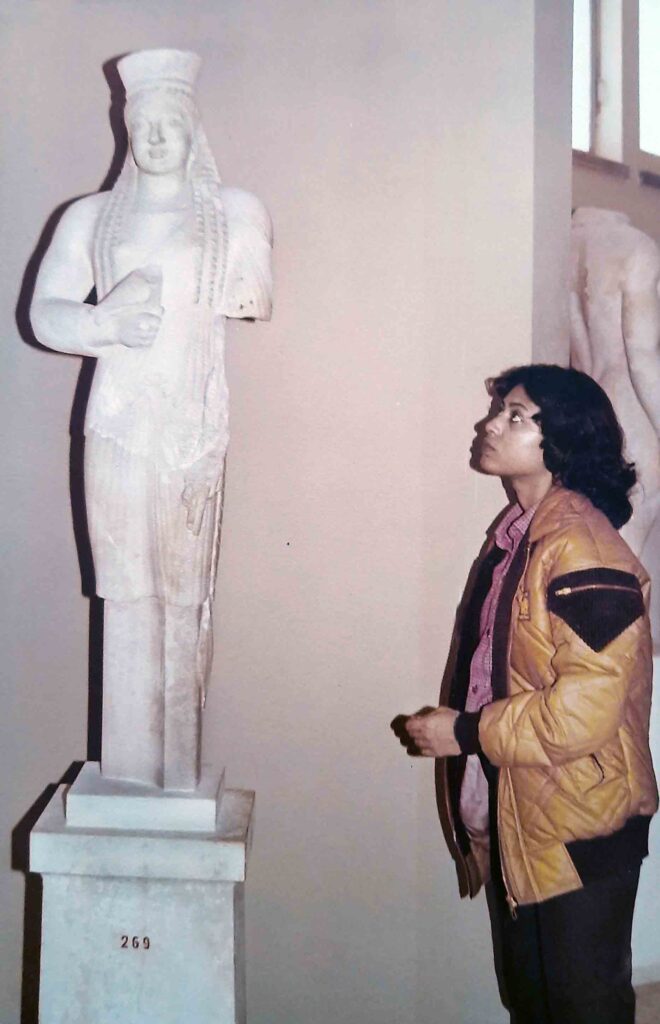
also visited the British Museum in London. 1983
Seeing my interest, the most celebrated artist of that time Yannis Tsarouchis told me, ‘When your great poet Tagore came to visit Greece, he said, ‘I didn’t come to see the archaeological sites only, rather I would like to get acquainted with the new generation of poets, artists and others who are involved in the cultural fields and their creative works.”
In this aspect, Prof. K G Subramanyan later clarified once in an interview, “If you want to be an Indian artist you should be close to your environment. Then only you will be an Indian artist and if you want to be a contemporary artist, then you should belong to the times. Then only you can be a contemporary artist and if those two things are there in an artist, then you will be a contemporary Indian artist. It is sort of a simple thing.”
For my research work, I visited various Greek archaeological sites— Temples, Museums, Ancient Theatre, Islands and the Minoan Palace of Knossos in Crete, where I was fascinated to see Relief Frescos of a Priest-King and a Bull at the Heraklion Museum, and I created some artworks inspired by those restored reliefs.
I also visited the British Museum in London with Awani Kant. My sister Mrs. Manashi Ghosh and brother-in-law Dr. Sisir K. Ghosh were then in England, and they arranged our marriage in Birmingham, in 1983.
After going to Greece, I first lived in a small two-room with Awani in a multi-storeyed building in Pangrati, Athens, where there was not enough space for making sculptures.
Then after some time Emilios Bouratinos, a close friend of Awani, arranged for us to stay in their old huge house downtown in Athens. From there I started making some sculptures, besides my research work. The home address was 53, Ithakis Street, 11251, Kipseli, Athens, Greece. The house was a bit like an archaeological piece, and Bouratinos’ mother was also an artist, so a beautiful relationship was formed with that house and a beautiful friendship developed with the whole family of Bouratinos. His Irish wife Ruth was a very kind-hearted person, and they had two beautiful daughters— Ilaira and Emilie. We still share a family-like relationship. We were there for a year and then renovation work started in that house, so we had to shift.
We shifted to another old house, 12, Beles, 11741 Koukaki, Athens, Greece and made all the arrangements there to live and work again. After going to that house, my work speed tripled.
Besides my doctoral research and sculpture practice I strove hard to promote Indian dance and art to bring the rich cultural diversity of India to the people of Greece. I gave a number of performances.
Whenever I visited Herodotus, the ancient amphitheatre in Athens, I always wanted to perform there. In 1985 I was invited to perform during the Greek Summer Festival, when Greece was the summer capital of Europe. I trained Greek actors and dancers to produce a dance drama ―The Princess and Hermit.
I also had an opportunity to work with the Greek dance revivalist Dora Stratou. Seeing my interest in learning diverse dance forms, she invited me to learn various Greek dances during rehearsals of her Dance Company at Plaka, Athens.
Then I met Jules Dassin the renowned film and theatre director, who made the famous film Never on Sunday, and married Melina Mercouri, an actress and politician. He was such a nice person. He came to our Exhibition at Kreonidis Gallery, praised it highly and commented ‘I am touched by your sincerity, your tenderness, and your strength. It is more than a pleasure to see the talent of a painter, poet, and sculptor expressing the overlapping of the two cultures.’
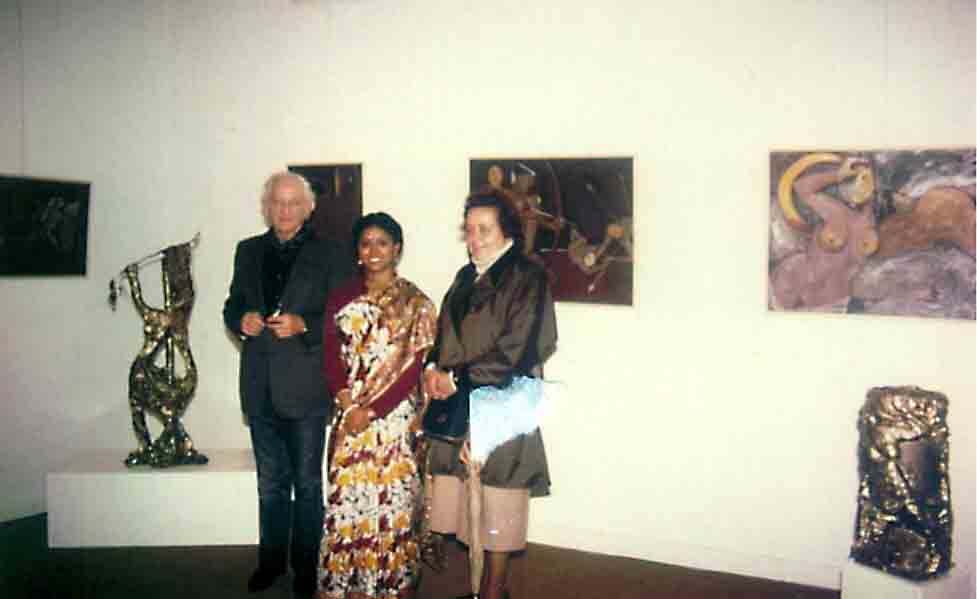
Awani Kant introduced me to many famous Greek artists. One of them was a very famous Greek sculptor Mrs. Natalia Melas who was the granddaughter of the historic national figure— Pavlos Melas. On weekends she used to invite senior artists to her studio. On one such occasion, I got an opportunity to perform my first performance art in front of many celebrated artists of Greece. I performed a Body art Performance ‘Rainbow of Desire’ at her studio in September 1985. Then again I gave another performance, ‘Voice from Within’ at my 12, Beles Studio and sent a few photographs of those performances to Prof. Somnath Hore who was a well-wisher of mine.
Somnath da then wrote a letter to me saying ‘Don’t stay in Greece longer, come back and show your performances, and introduce that art form to young artists in India’. So I came back to India in mid-1986.
However, before I started performance art here in India, I did many exhibitions of sculptures and paintings and in a very short time, I made a mark in the art field of India.
